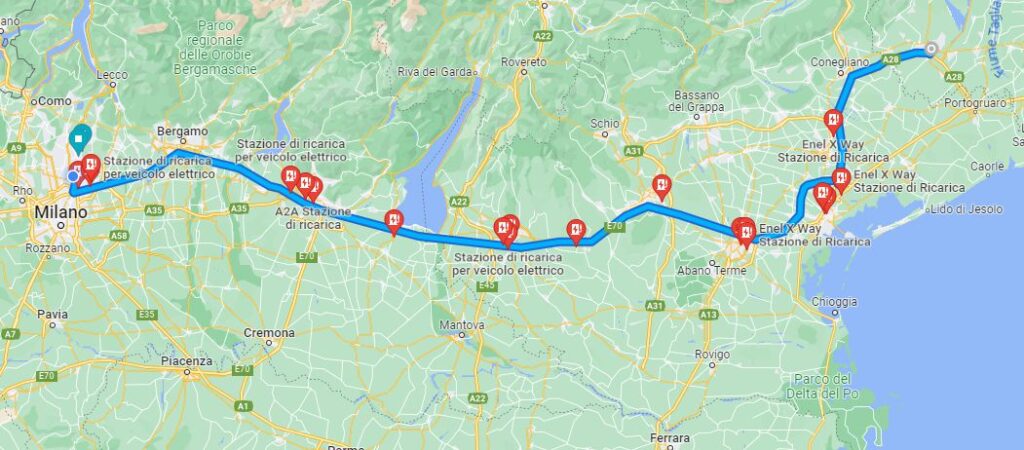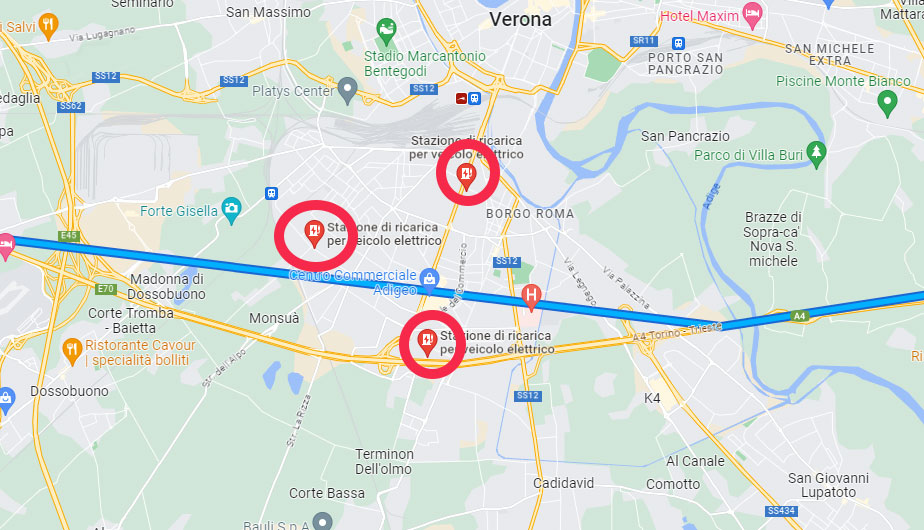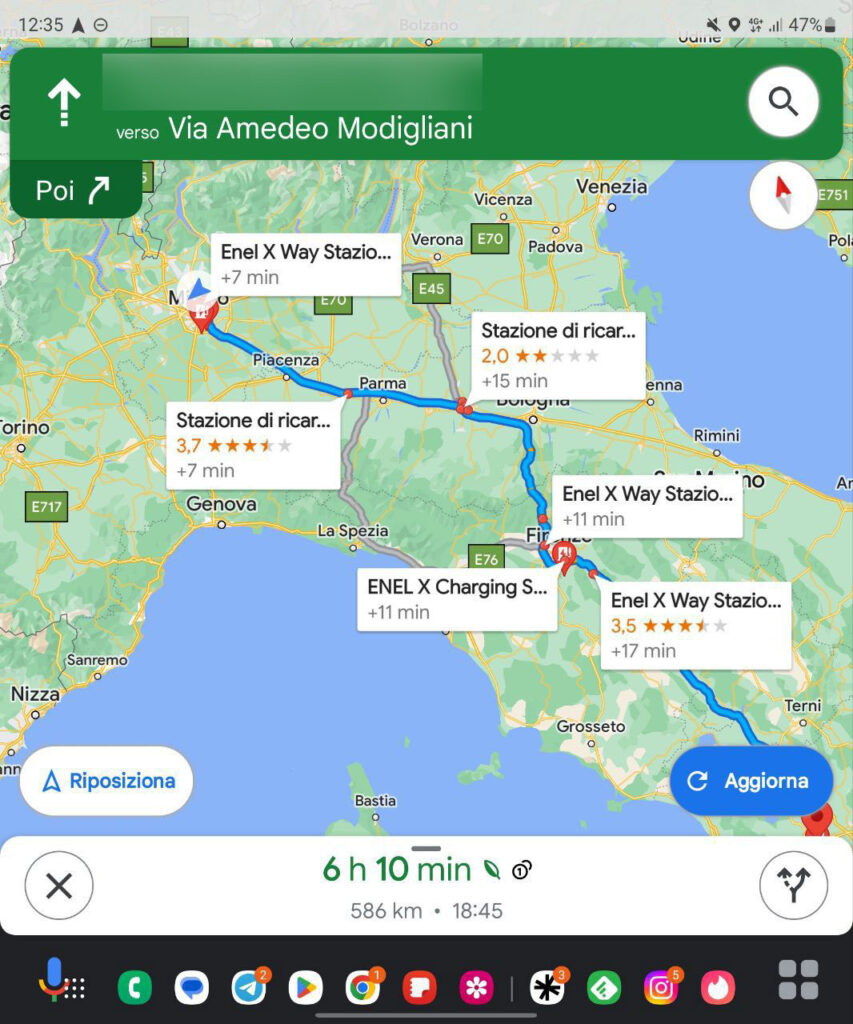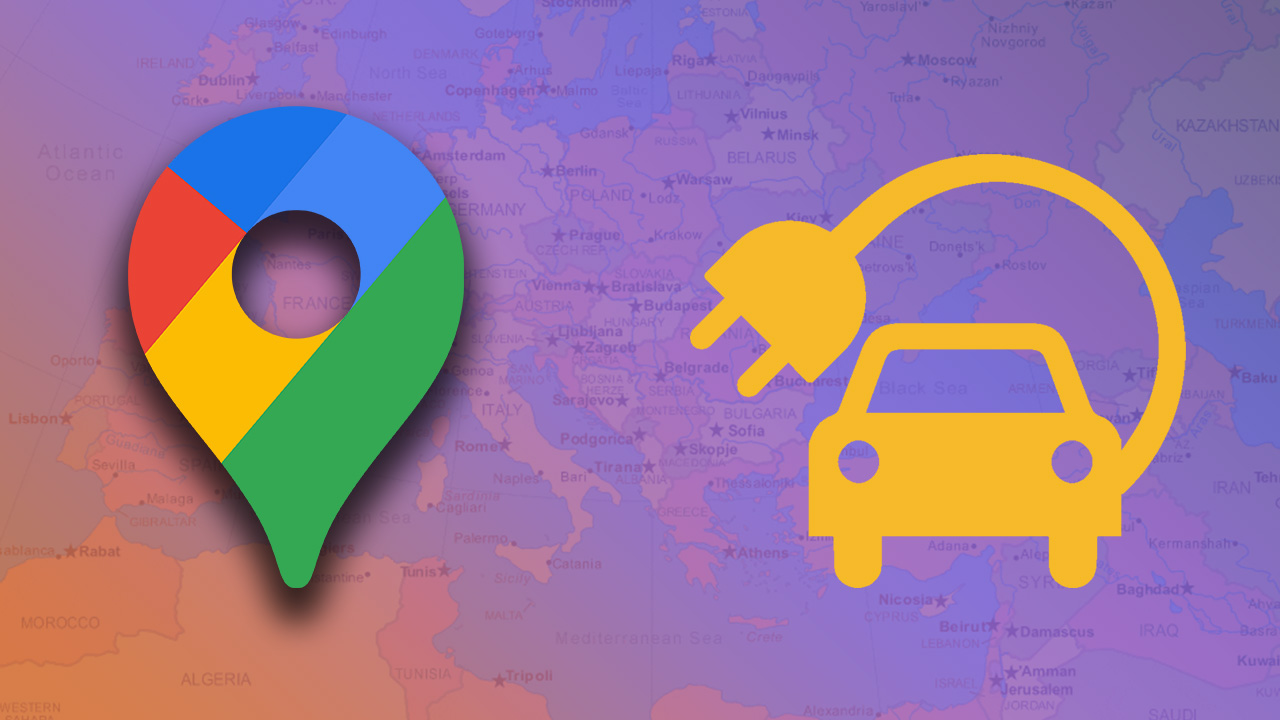You are going on a trip and you want to plan it well.
And “planning” it well, in 2023, could also mean checking where the columns for recharging electric cars are located.
What that up Google Maps you can do quite easily.
Enter the destination address, select “Directions” and then, at the top of the route map, click on “Ricarica EV“.
In a few moments Google returns to you a list with the electric columns, located along the road, which you can use as you reach your destination.
The problem with electric car charging stations

Why then are we talking about the “deception” of Google Maps?
Because, at first glance, you will have the impression that the electric car charging stations are really along your route. And, given that long distances usually include sections of highway, we expect the EV charging points provided by Google Maps to be located on the highway as well.
But no.
Zooming in on the highlighted locations you will notice that the columns are all off the motorway, which means that you should exit, recharge and then re-enter.

In fact, Maps does not currently include EV charging points on motorways, and it is doubly disadvantageous. On the one hand it means, as anticipated, that you will have to leave the expressway to recharge the car, on the other it means giving up the super-fast charging columns – 150/300 kW – which are found in the service stations of the highways. This obviously does not mean that all those indicated by Google Maps are not fast but give up a certainty for a possibility.
We asked Google for a comment on this:
“Information on EV charging stations comes from local third-party EV data aggregators and we are constantly working to keep our maps up to date.”
But the furniture?
There is one more limitation associated with this feature.
The “Recharge EV” button is only present when consulting Google Maps from a computer.
In fact, the app, both on iOS and on Android, has no equivalent compared to the web version.
However, you can obtain the same result by clicking on the lens at the top right and looking for “Recharge EV”. By doing so, you will see the columns located along the route, just like the web version.

In short, you can still use the functionality but from mobile everything is a little less intuitive. A real shame considering most drivers tend to use the Maps application rather than the website.
We point out that in some cases we were unable to view the result because the app signaled a server error but don’t worry: this can happen both on mobile and on PC because, simply, your network operator may have directed you to a server Google which at that specific moment is being updated. If you are connected to Wi-Fi you can try searching with your mobile operator; alternatively you can activate a VPN, such as Nord VPN, and try again. The error should disappear.
Could it be done better?
Well, undoubtedly yes.
In fact, for some time now, the Google Maps application has been allowing you to select the type of power supply for your car by choosing between Petrol, Diesel, Electric and Hybrid with the aim of showing you routes based on your type of engine to save fuel or energy. It would be very useful to associate the “EV recharge” button with the “Electric” and “Hybrid” types or automatically show the columns along the route.
In the near future, considering that some car manufacturers are adopting Android Auto as their native infotainment system, we also expect suggestions on where and when to stop to recharge the car to optimize our time and make our journey more pleasant and peaceful.
What do you expect from Google Maps instead?
















Leave a Reply
View Comments